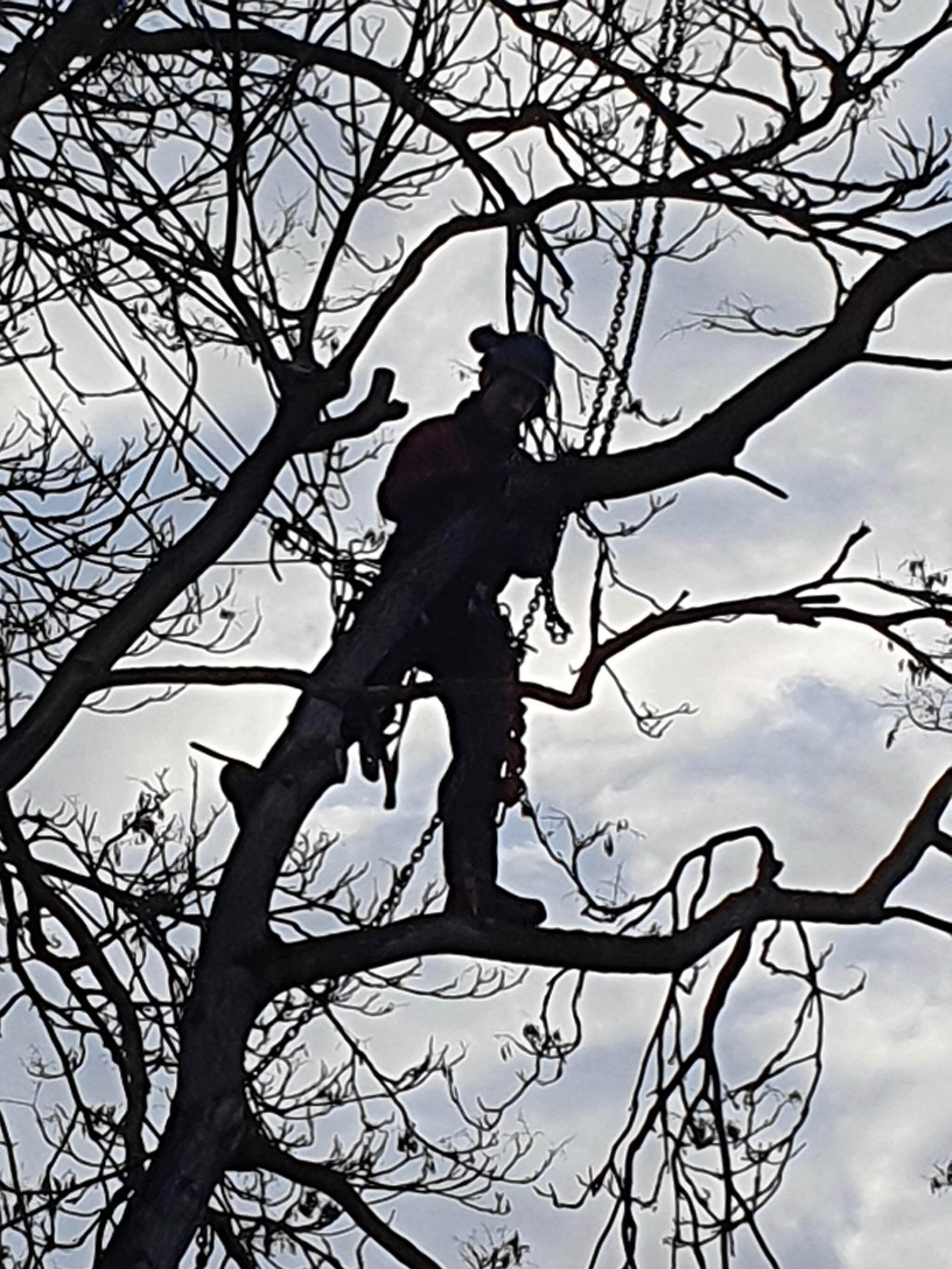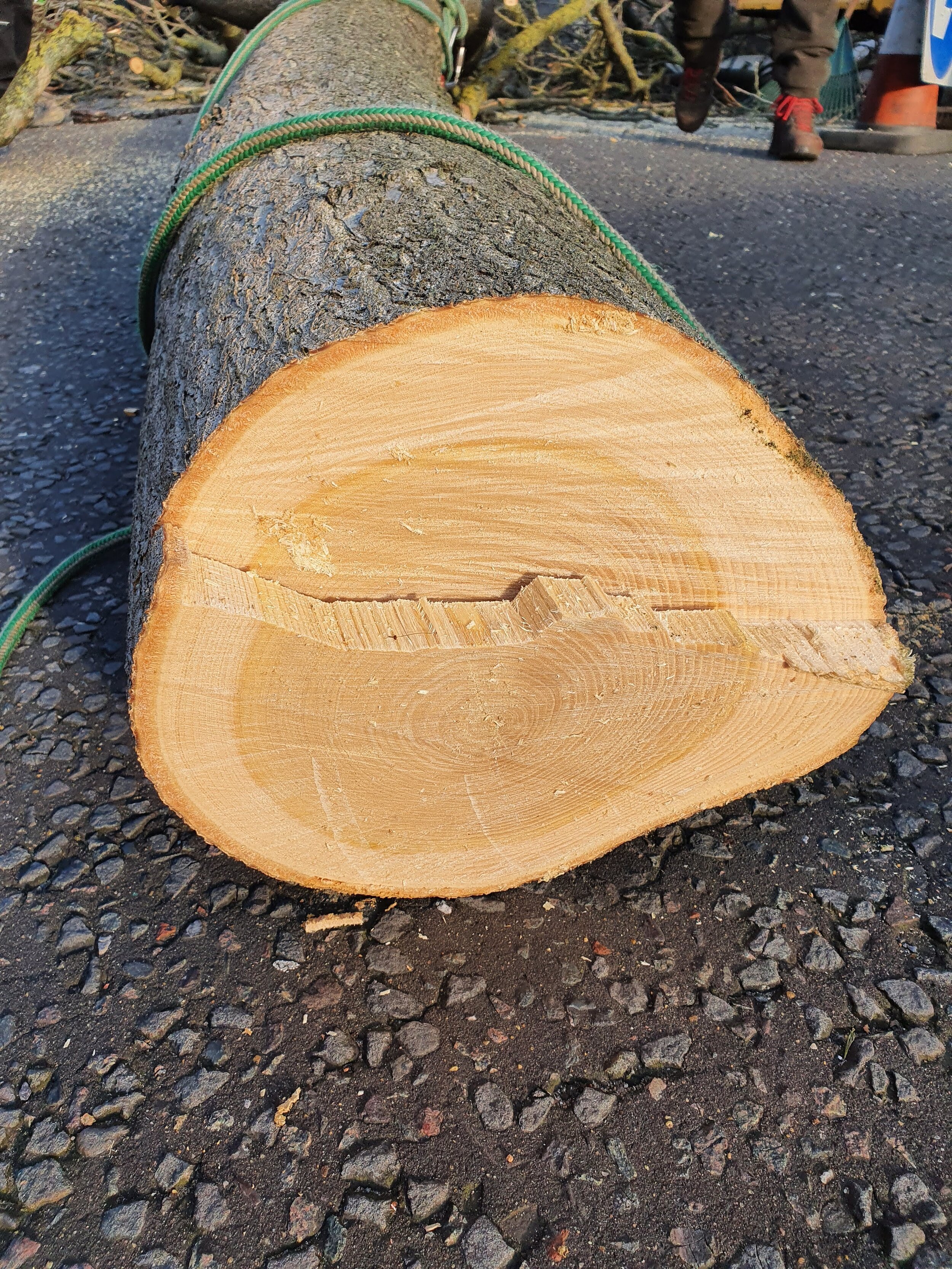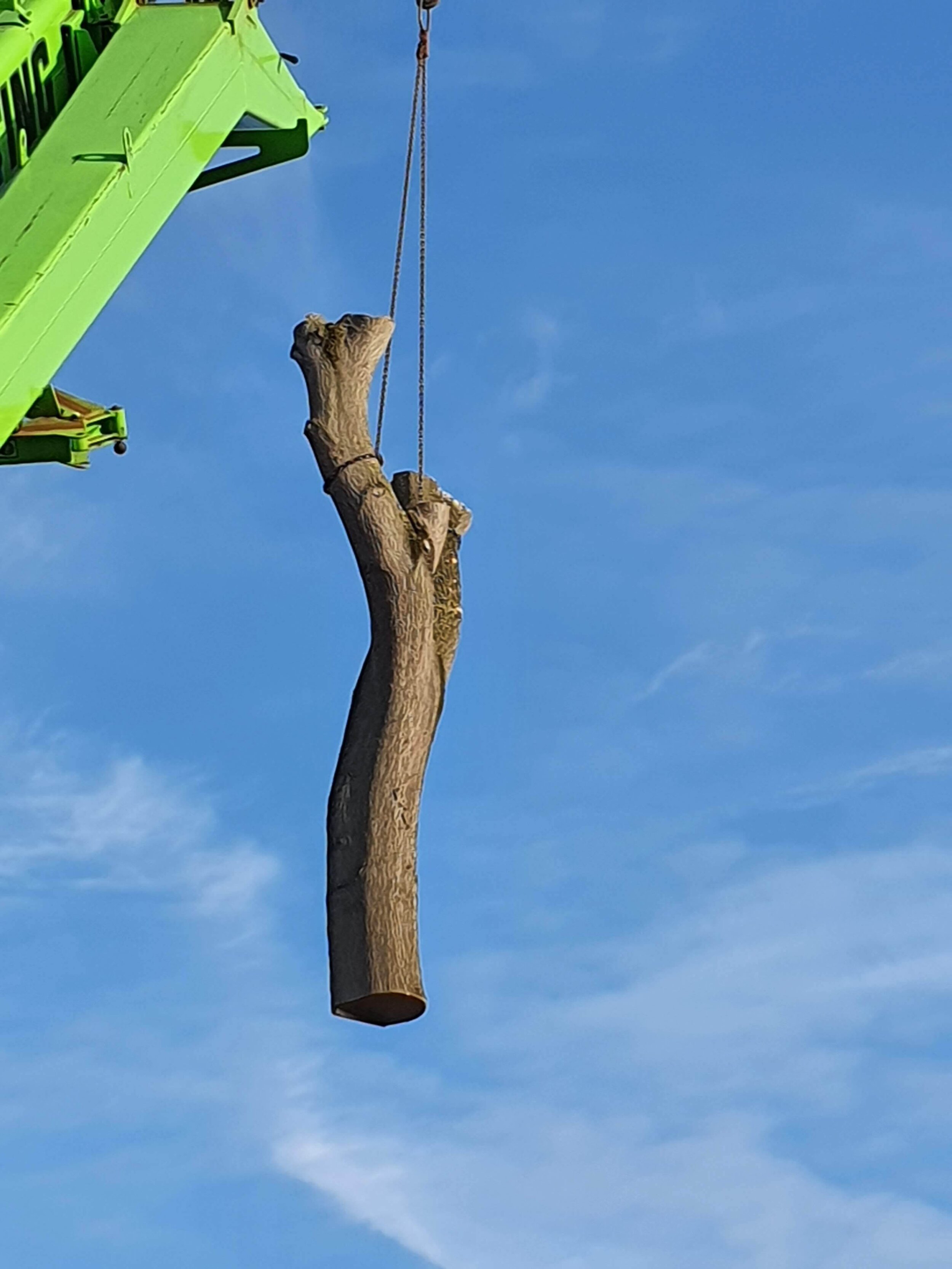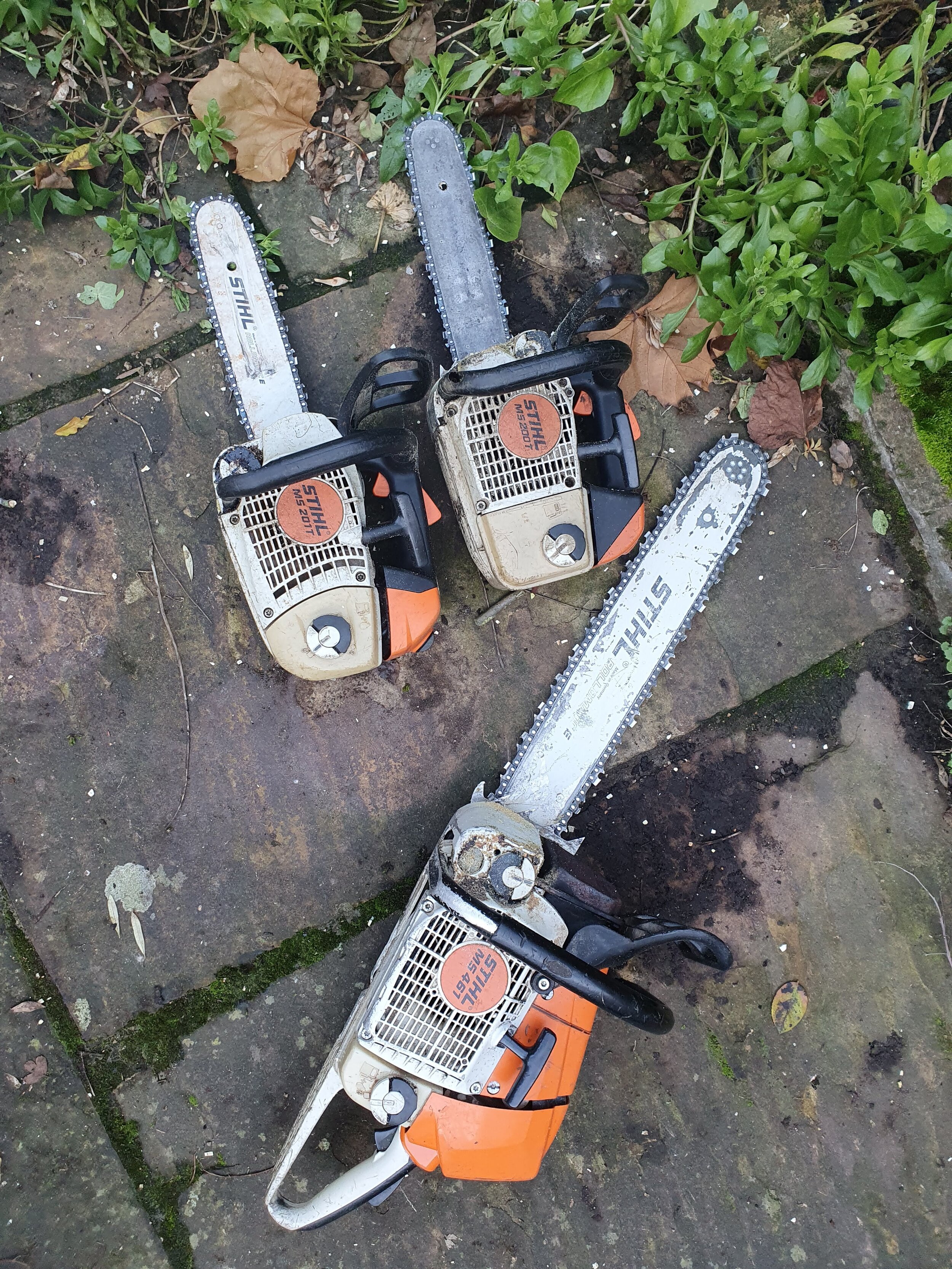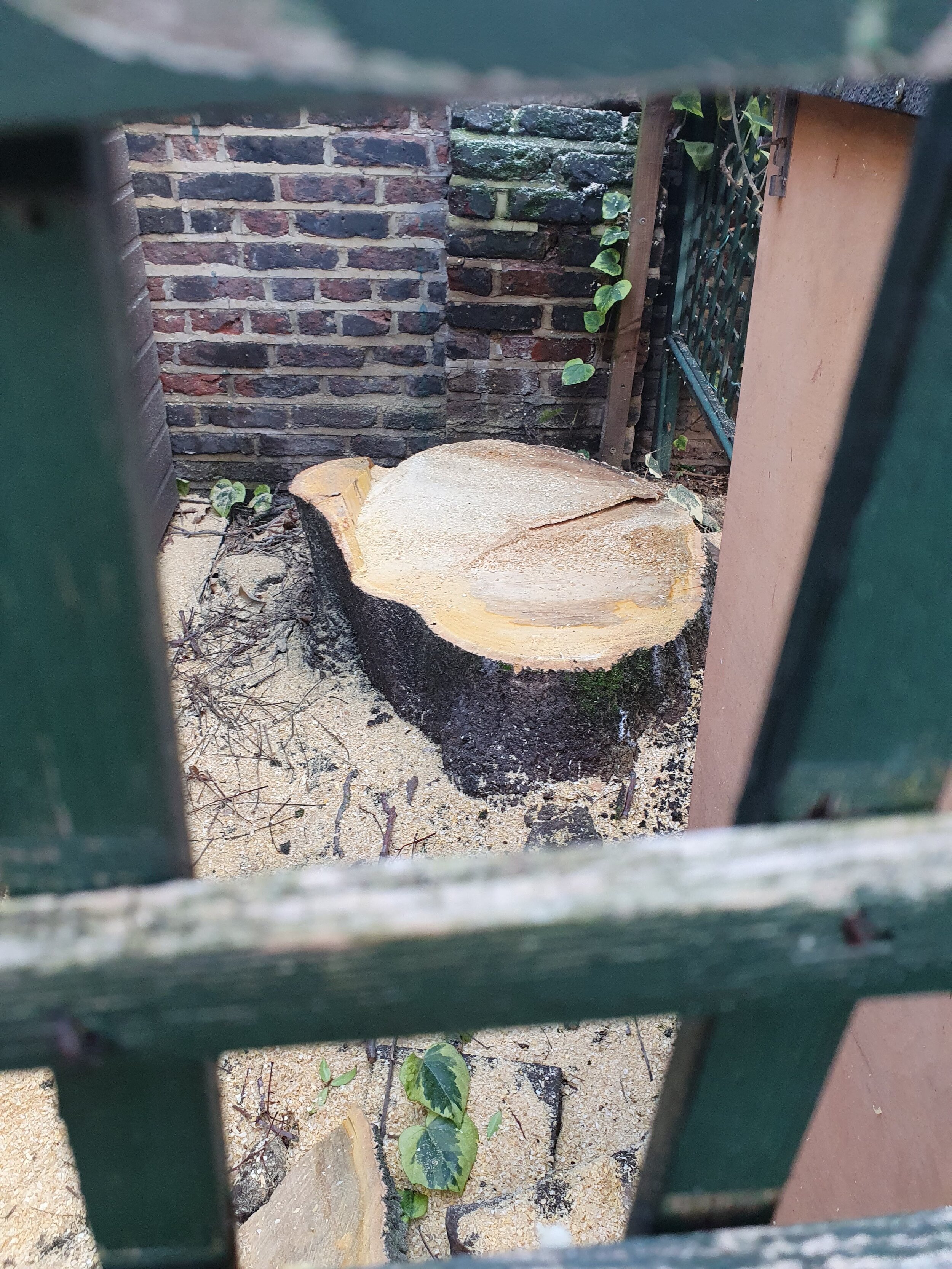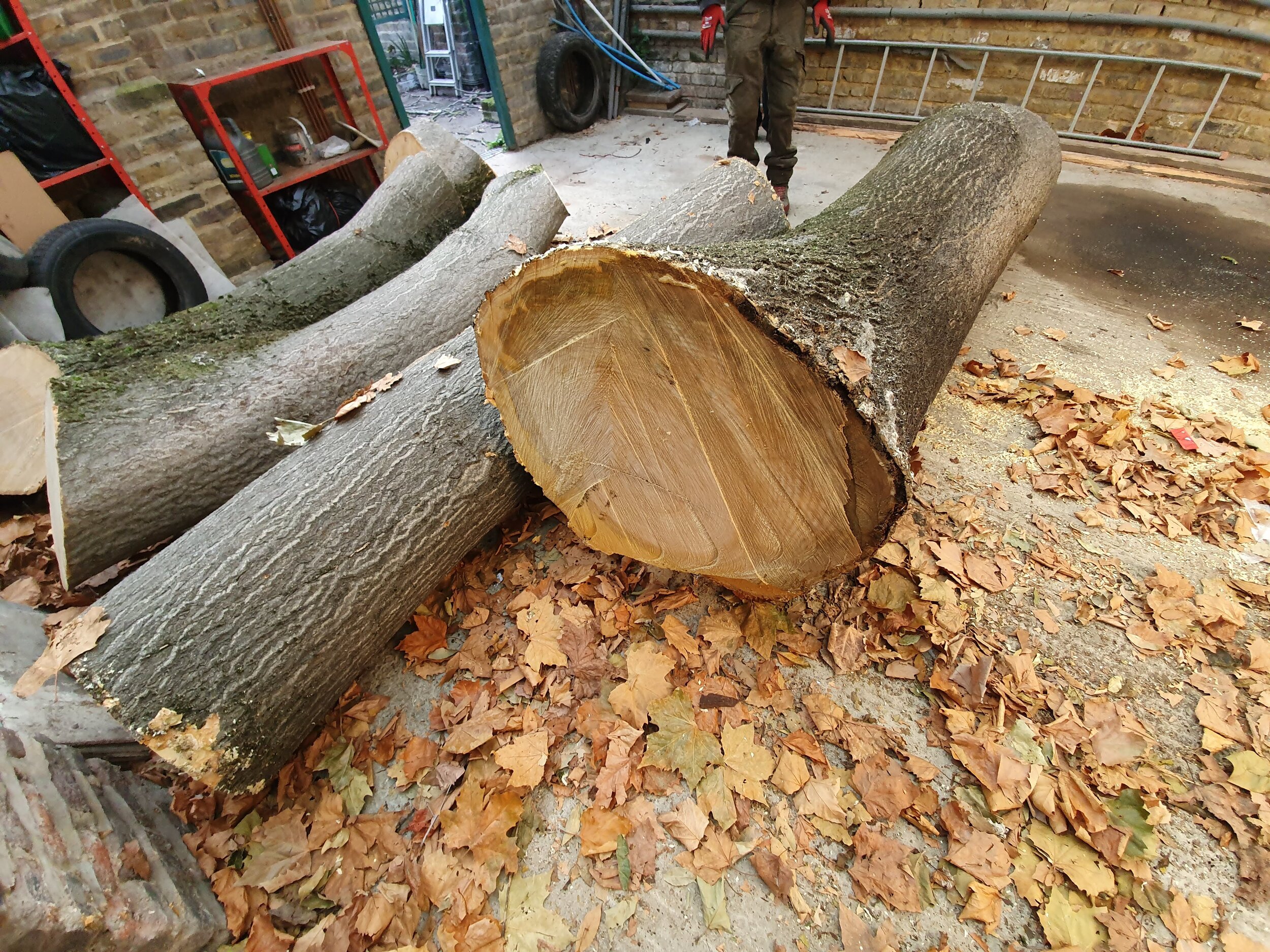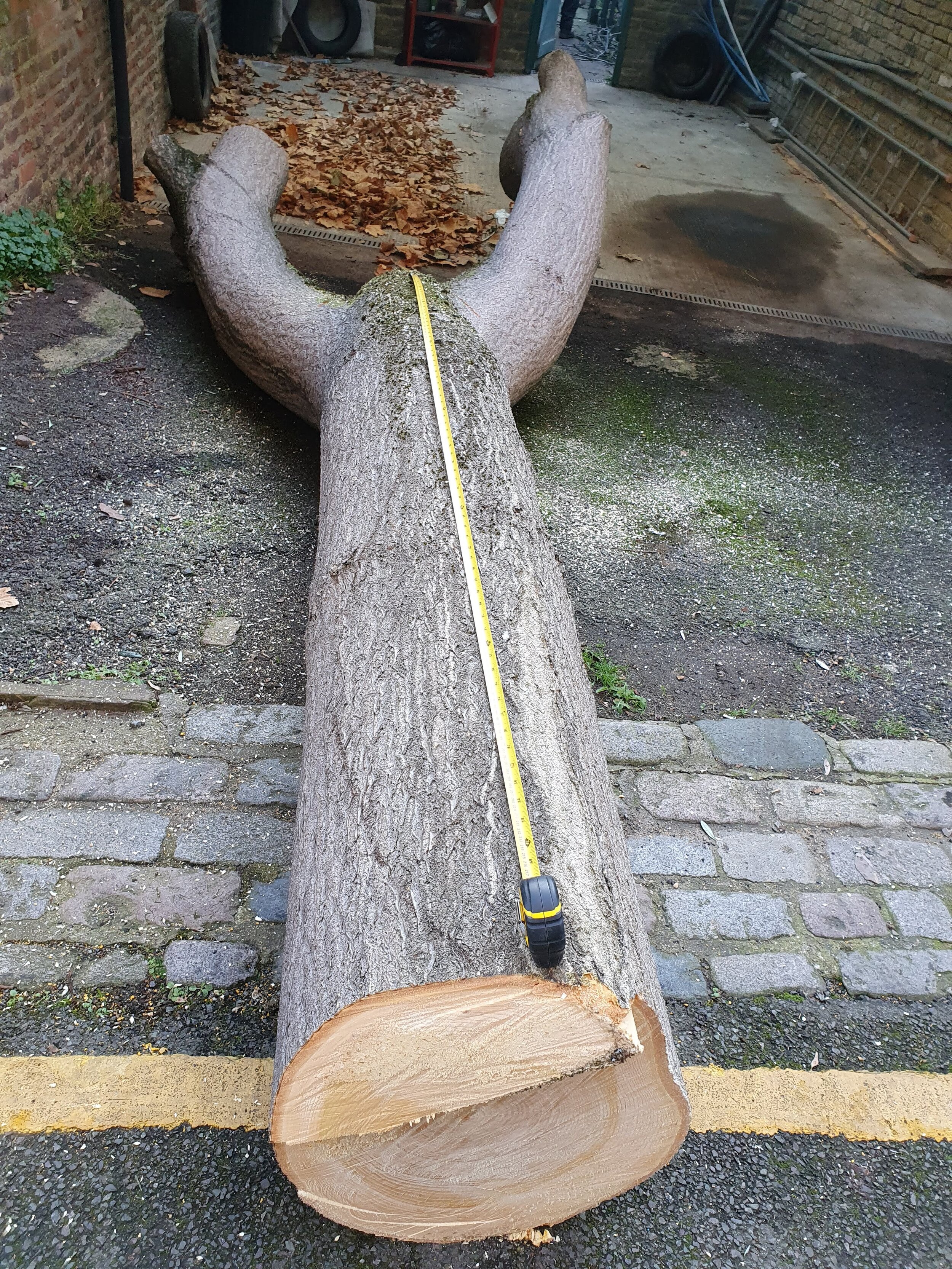I was back in Kensington today to help mill the Ailanthus tree that was felled last week. And by help I mean marking up pieces of tree with chalk and watching experts convert it into usable timber. I learnt alot today and I am optimistic that the yield has been maximised.
The mill and the Milling
The milling was hard going, the sapwood is very gummy, especially just beneath the bark and the chainsaws clogged and became blunt after two 2 metre passes. The mill operators were slowed down considerably and needed to return the following week to finish the job.
Shakes or cracks in the timber are the most common challenge when it comes to converting threes into usable timber. Heart shakes occur along the centre of the tree, where it’s the oldest and most fragile. The middle boards, and especially the very centre board is susceptible to this and when we placed our central board onto the sticked pile there was a very loud crack as the board parted down the middle. Although this a challenge to the yield, the central board obviously very wide compared with the outer ones so two lengths of usable timber can be taken either side of the crack.
The other boards fared well with the exception of a few felling shakes at their extremities, and but only 10 to 15cm from the ends. Felling shakes caused by the trauma of the felling process
The Timber
As a European furniture maker, I know very little about the Tree of Heaven and in the next few weeks I endeavour to educate myself. I had read that the timber resembled European Ash and was noxious when milling. As we started to mill through the body of the trunks, the characteristics of this Ailanthus tree started to reveal itself. Although, the timber was not smelly at all when cut, the timber did indeed resemble the pale, grey-yellow of Ash. The very heart is a golden brown and the sapwood paler than the main body but similar enough that some will be robust enough for use.
Yield
There are numerous blanks ideal for turning, especially those cut from the confluence of the limbs or trunk and limbs, where the timber is more colourful and varied in its figure. Elsewhere, there are potential greenwood working opportunities and at the bottom of the priorities, some rounds and odd shaped but small pieces for outdoor furniture.

